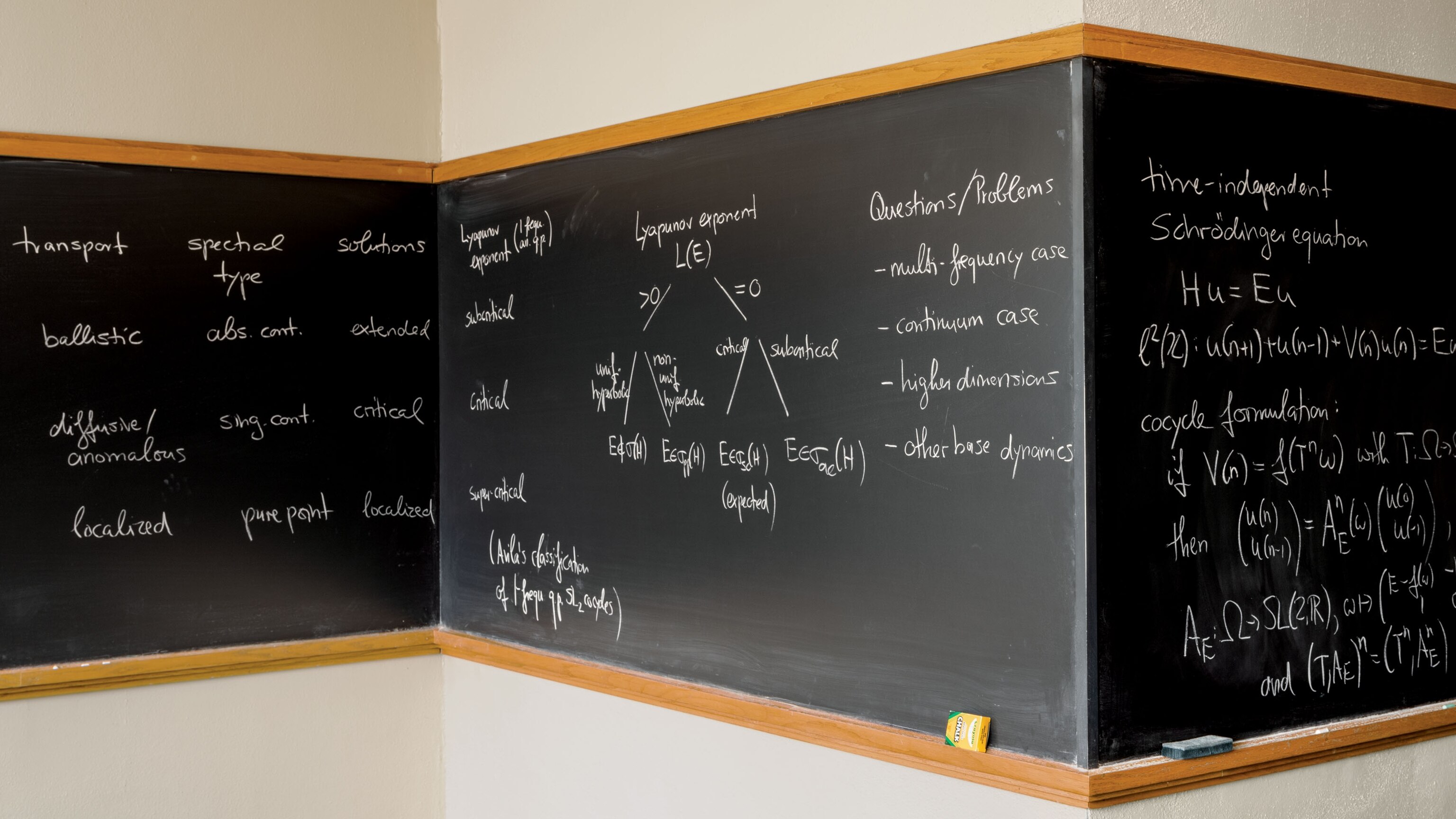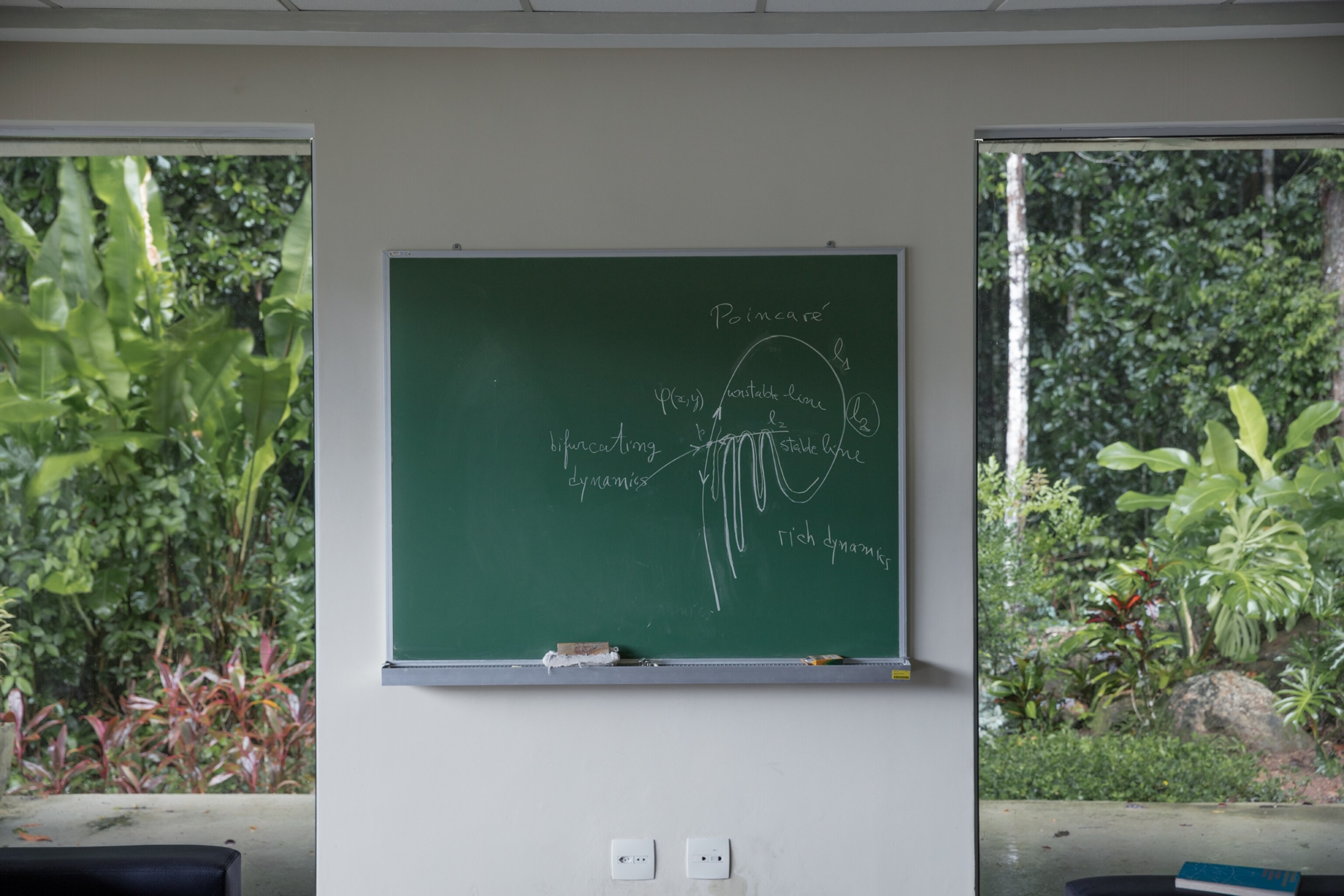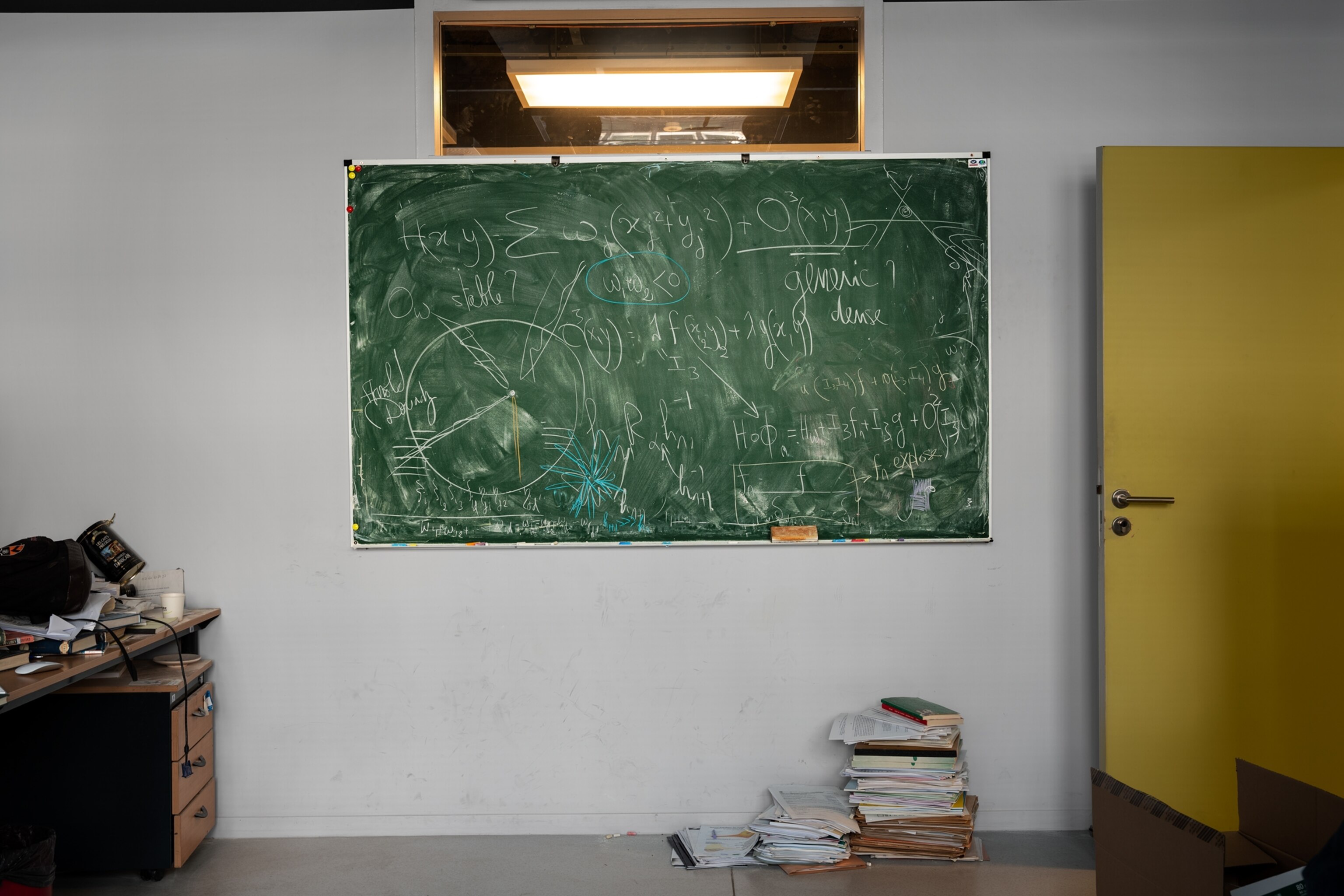This story appears in the April 2021 issue of National Geographic magazine.
Detractors may deride mathematics as difficult, abstract, rigid, boring. But to admirers, mathematics is fascinating, creative, even an art form—and its canvases are chalkboards covered with scribbles, an odd mix of therapy and ingenuity known as board work.
Photographer Jessica Wynne learned about the beauty of mathematics from her summer neighbors on Cape Cod, Massachusetts. Both of them are theoretical mathematicians, and when their friends—also theoretical mathematicians—came over, Wynne noticed that chalkboard ponderings were how they communicated complex ideas and worked out knotty problems. They used chalkboards to collaborate and spar and, most of all, to explore the boundaries of known mathematics. Some described it as meditation.






In a world with plenty of paper, whiteboard, and digital screen space, why chalk? “That’s like asking a painter why they paint with oils,” says Wynne. But there are practical matters too, she says. Dry-erase markers stain clothes and hands. Then there’s how chalk sounds and feels when in use: a soft knock and rhythm, almost like a metronome. One University of Chicago mathematician vowed that if the math department replaced chalkboards with whiteboards, the faculty would revolt.
The quandaries of theoretical math are far more difficult than solving for x or balancing the quadratic equation. Some mathematicians try to find new universal truths, as Archimedes discovered pi and Pythagoras defined a right triangle. Board work also may be an end in itself—a place to record one’s thoughts, unrushed. Wynne photographed one heavily notated board, at Yale University, on which the professor had written in one corner: “Pls do not erase.” It had remained untouched for five years.
A book of Wynne’s chalkboard images, Do Not Erase, is set for June 2021 publication by Princeton University Press.

Related Topics
You May Also Like
Go Further
Animals
- Fireflies are nature’s light show at this West Virginia state parkFireflies are nature’s light show at this West Virginia state park
- These are the weird reasons octopuses change shape and colorThese are the weird reasons octopuses change shape and color
- Why young scientists want you to care about 'scary' speciesWhy young scientists want you to care about 'scary' species
- What rising temperatures in the Gulf of Maine mean for wildlifeWhat rising temperatures in the Gulf of Maine mean for wildlife
- He’s called ‘omacha,’ a dolphin that transforms into a man. Why?He’s called ‘omacha,’ a dolphin that transforms into a man. Why?
Environment
- What rising temperatures in the Gulf of Maine mean for wildlifeWhat rising temperatures in the Gulf of Maine mean for wildlife
- He’s called ‘omacha,’ a dolphin that transforms into a man. Why?He’s called ‘omacha,’ a dolphin that transforms into a man. Why?
- The northernmost flower living at the top of the worldThe northernmost flower living at the top of the world
- This beautiful floating flower is wreaking havoc on NigeriaThis beautiful floating flower is wreaking havoc on Nigeria
- What the Aral Sea might teach us about life after disasterWhat the Aral Sea might teach us about life after disaster
History & Culture
- Scientists find evidence of ancient waterway beside Egypt’s pyramidsScientists find evidence of ancient waterway beside Egypt’s pyramids
- This thriving society vanished into thin air. What happened?This thriving society vanished into thin air. What happened?
Science
- Why pickleball is so good for your body and your mindWhy pickleball is so good for your body and your mind
- Extreme heat can be deadly – here’s how to know if you’re at riskExtreme heat can be deadly – here’s how to know if you’re at risk
- Why dopamine drives you to do hard things—even without a rewardWhy dopamine drives you to do hard things—even without a reward
- What will astronauts use to drive across the Moon?What will astronauts use to drive across the Moon?
- Oral contraceptives may help lower the risk of sports injuriesOral contraceptives may help lower the risk of sports injuries
- How stressed are you? Answer these 10 questions to find out.
- Science
How stressed are you? Answer these 10 questions to find out.
Travel
- Fireflies are nature’s light show at this West Virginia state parkFireflies are nature’s light show at this West Virginia state park
- How to explore the highlights of Italy's dazzling Lake ComoHow to explore the highlights of Italy's dazzling Lake Como
- Going on a cruise? Here’s how to stay healthy onboardGoing on a cruise? Here’s how to stay healthy onboard
- What to see and do in Werfen, Austria's iconic destinationWhat to see and do in Werfen, Austria's iconic destination





